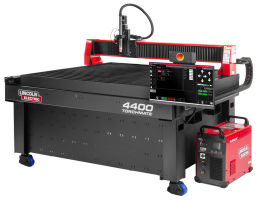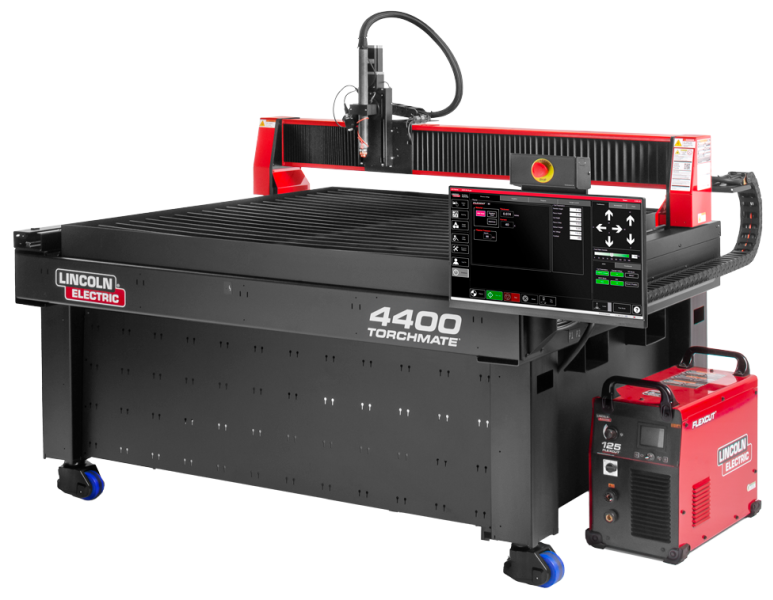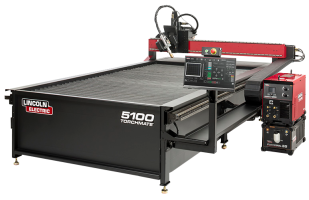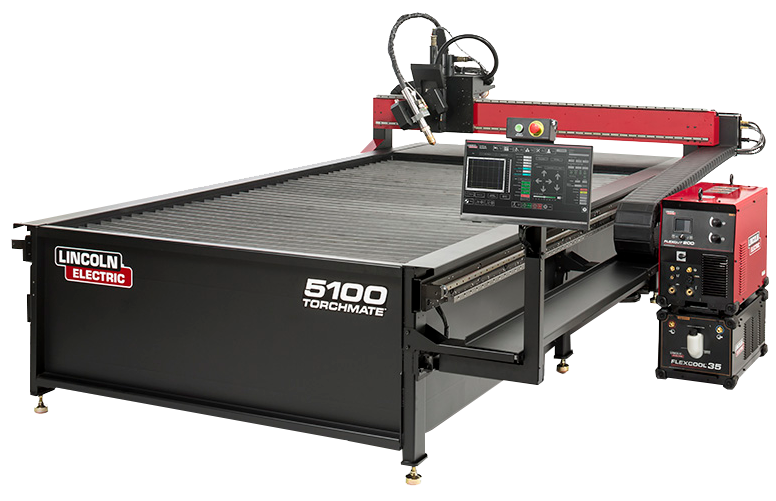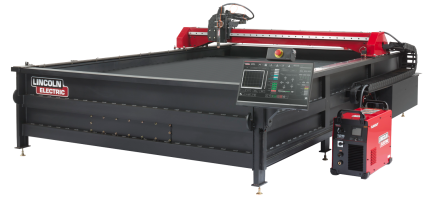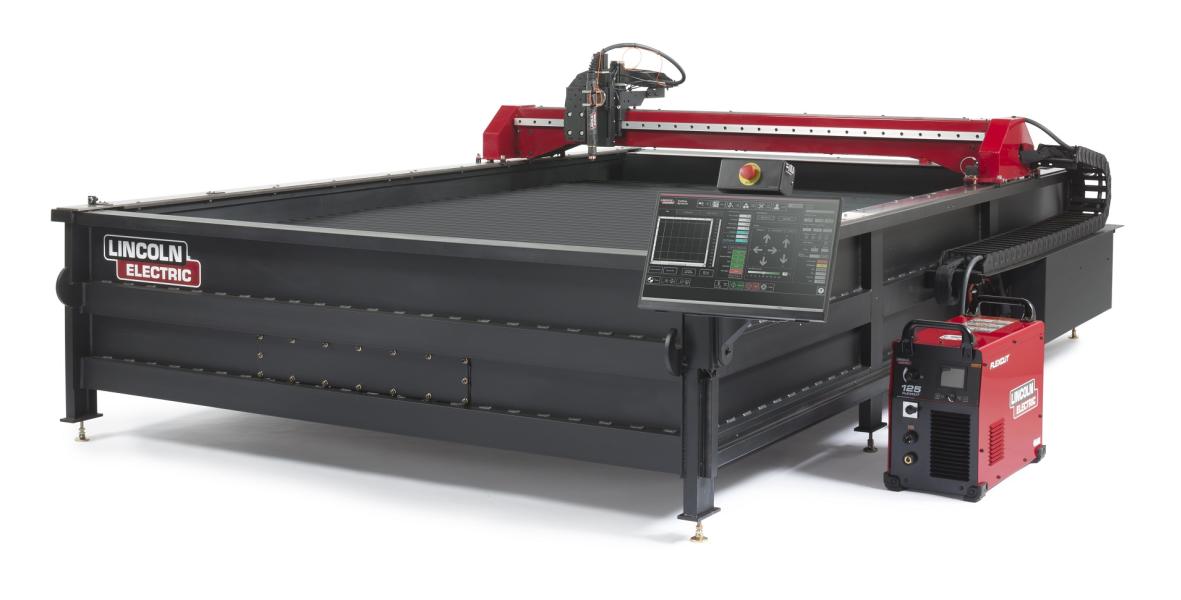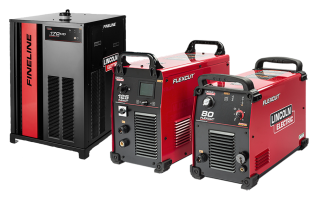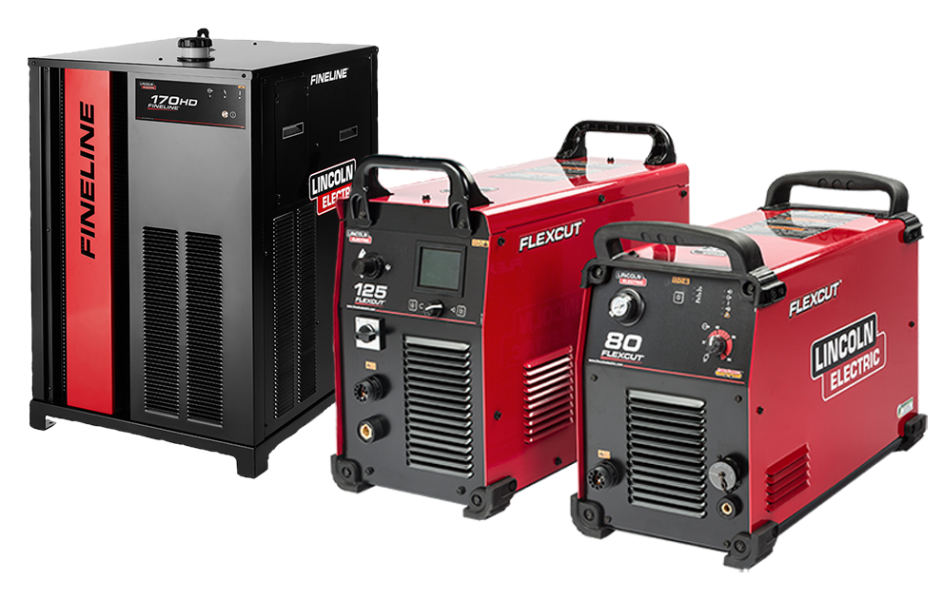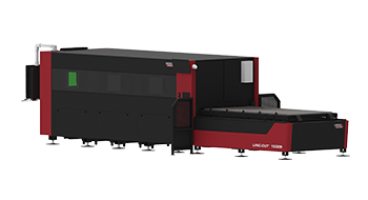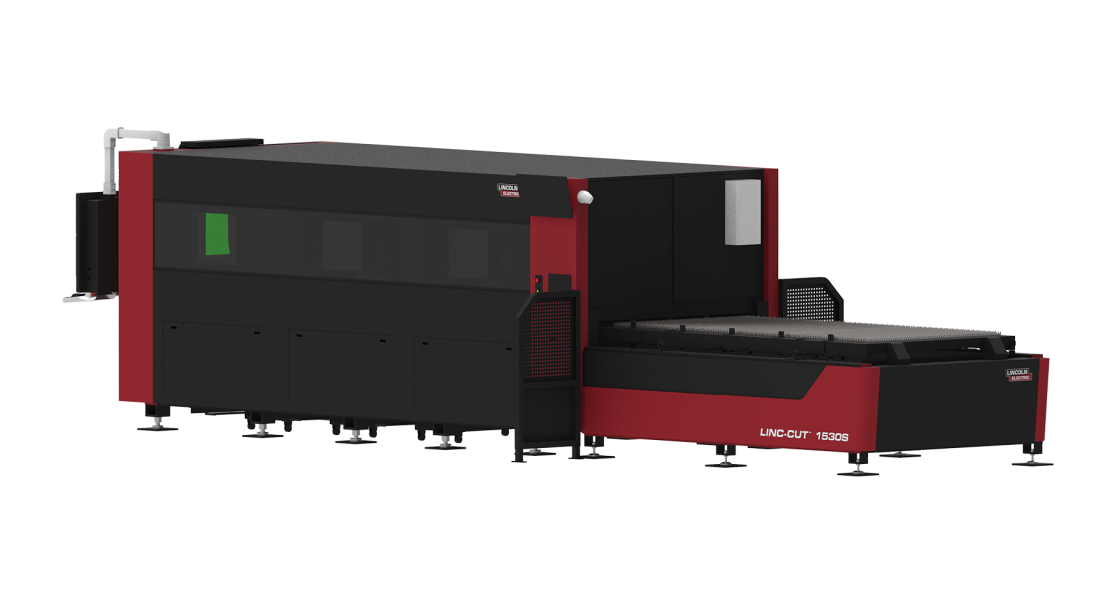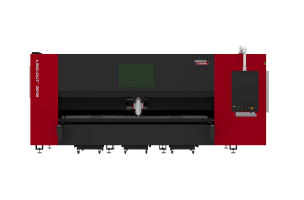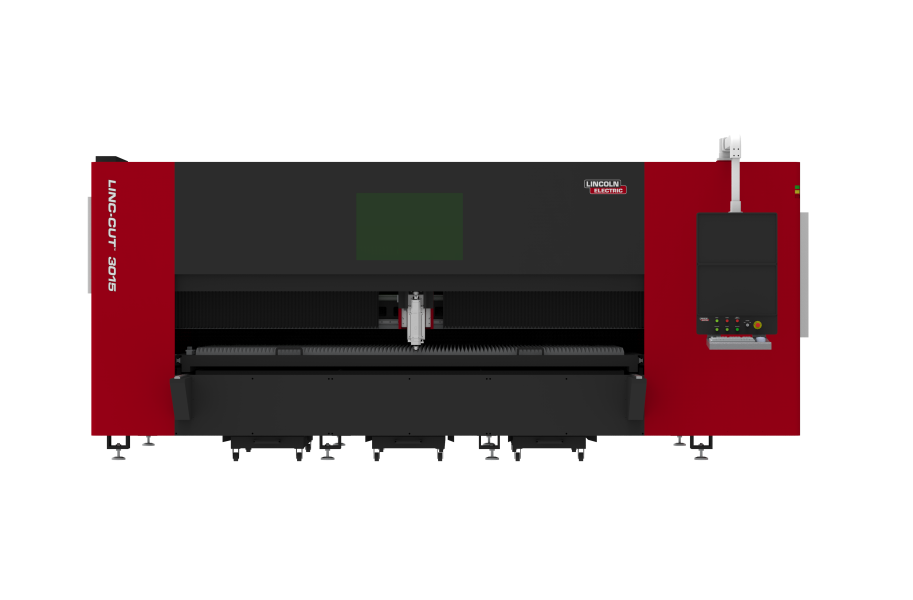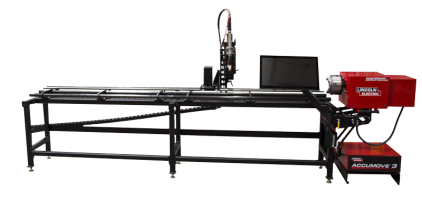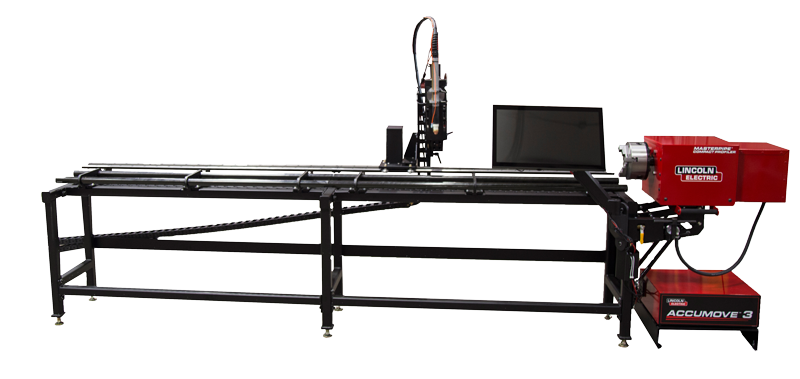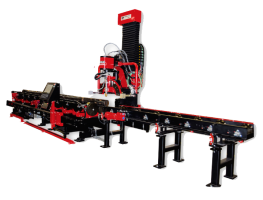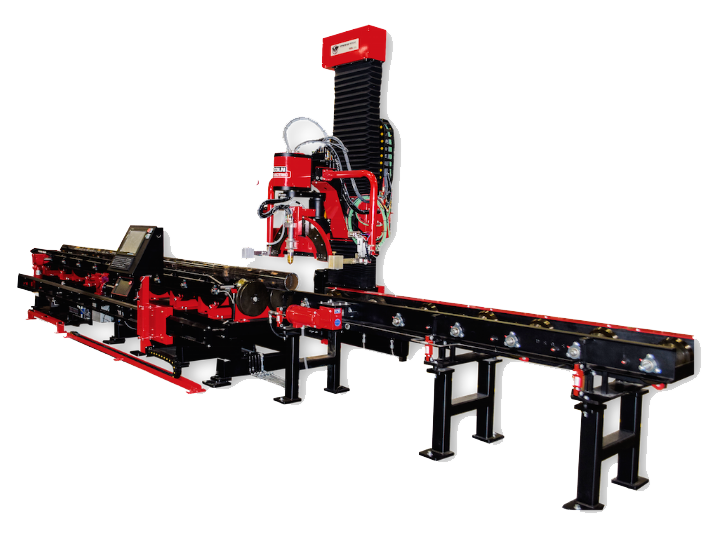Multiple Tool Setup in the Torchmate Driver Software Version 3
The Torchmate Driver software is designed to activate output lines to control a number of different tools. Discussed in this section will be the configurations for tools that Torchmate sells. This is not an exhaustive list of all the tools that can be attached and controlled from the table. In fact most any tool that can be activated by either a 110/220V outlet turning on and off, a 5V high/low signal, or an open/closed loop can be controlled by the Torchmate system. If a tool not listed here is to be set up please contact Torchmate Technical Support for assistance. This manual will discuss three tools; oxy fuel torches, routers, and plate markers.
Testing Output Lines
The first step in setting up multiple tools is to determine which output lines turn on which tool, the actual output line will vary depending on the number and type of interfaces wired into the CNC system. Go to Configuration > I/O > Output Lines, by default plasma will be listed in line one. The tools listed here will appear in the AUX tab on the main screen. This screen allows the output lines to be activated for testing. In order to enable other lines for testing a description must be entered in the Output Lines menu. A simple description such as ‘1,2,3,4,…” allows the line to be identified in the AUX menu. Press OK and access the AUX tab output lines should now be listed by the descriptions given. For each interface connected enable two output lines, this will allow all possible outputs to be tested.

Try each line individually to determine which one activates which tool. Once this is established go back to the Output Lines menu and change the description to reflect the test results.
Configuring Tools
Multiple tools can be configured simultaneously and can then be selected via the Tool Drop Down Menu on the main screen. All tools will need to have an M-code Definition to turn them on and off; additionally a macro will be written to activate the proper tool when that tool is selected in the Tool Drop Down Menu. A general understanding of how each tool operates can lead to a better understanding of how the macros will work.
Oxy Fuel Torch:
Torchmate oxy fuel systems use a three hose system to cut, generally oxygen and acetylene is used but not exclusively. In a three hose setup one hose is acetylene, one is the preheat oxygen, and the other is the cutting oxygen. The preheat oxygen and acetylene use manual adjustment knobs to adjust the flame, while the cutting oxygen is activated through a solenoid controlled by the software. There are two timing values that are used, the preheat time and the pierce time. Preheat time is a prescribed amount of time that the torch will sit at a pierce point to warm the metal, during this time only the preheat oxygen and acetylene will be flowing. The preheat time will vary significantly due to the thickness of the material being cut. The second timing factor is the pierce delay, this is the time from when then cutting oxygen fires until the motors begin to move this time is shorter than the preheat time and allows for a good pierce to be established prior to table motion. Oxy fuel torches can be used to cut thicker metals and while slower than plasma the resulting cut will result in little to no bevel.
Plate Marker:
The Torchmate plate marking attachment uses a dual action pneumatic tip to punch metal at a rapid rate. This motion results in an etched-like design that can be used for part numbers, drill centers, or artistic designs. The force the plate marker strikes the material with as well as the frequency of oscillation can be set. By combining these two adjustments with various feed rates different effects can be achieved. The plate marker uses compressed air to run and a computer controlled solenoid to activate.
Router:
The Torchmate Z-axis utilizes a third axis to move a router, this allows for two and a half and three dimension cutting. Quality cuts with a router come from a combination of speed and the correct bit. Routing in the driver software utilizes three dimensional drawings or two dimensional drawings with plunge commands. Routers can cut foam, rubber, wood, acrylic, and many other materials.
Each tool used will need to be defined so that the driver software can reference it, go to Configuration > Tools > Tool Library. This menu defines each tool, type in the tool name for the description; this is the only setting that will be changed now. Note the tool number as this will be used in further configuration changes.
No matter what tool is used a macro will be created to control multiple tools. Begin by going to Configuration > Programming > M-code Definitions. In this menu create an on and off M-code for any additional tools. These tools will also need Action lines to be enabled; this line is based on which output line activates the tool as determined above, use a 1 for on and a 0 for off. Create as many tool macros as tools.

The delay setting for each tool will be slightly different.
|
Tool |
Tool On Delay |
Tool Off Delay |
|
Oxy Fuel |
3+ sec. * |
1.5 sec. |
|
Plate Marker |
0.5 sec. |
0.5 sec. |
|
Router |
1.5 sec. |
1.5 sec. |
*The oxy fuel on delay is the pierce time setting; this will vary by thickness of material.
Two macros need to be created to utilize the tools drop down menu. The first will turn on which ever tool is selected and the second will turn off the selected tool. Begin by defining each macro and the description, use 20 and 21 named Start and Stop respectively.
Begin with the Start macro, to edit this macro select the Macro field and press the ▼ that appears, this will prompt an edit window. The Start and Stop macros will have the same basic form, the only difference being that certain commands will be different for each tool.

The commands listed after each tool command will vary. For plasma without an AVHC, plate marker, and router the command will just be the M-code used to turn the output line (M50, M52, ect.). For plasma with an AVHC and Oxy Fuel multiple commands will be executed. For example if M50 turns on plasma, M52 activates oxy fuel, and M54 activates a plate marker the macro will be written like this.

The order of the tools should match the order they are listed in the tool library previously defined. Press OK when the macro is finished, and proceed to the Stop macro. The Stop macro will be written with a similar syntax as the Start macro. For each tool the off commands will be written in, for the off commands no additional lines of code need to be written.

Press OK once the Stop macro is written. Go to Configuration > Programming > M-code Execution. Change the executed macros from 50 and 51 to 20 and 21 respectively, the software will now execute the multiple tool commands that were written previously.
Defining Tool Offsets
Tool offsets tell the computer the distance between each tool so that if a tool change is made the driver moves the new tool along the same path.
The first step is to go to the tool drop down menu and select the first tool. Jog the table physically to a location and mark the center of the tool selected. With the center marked go to the program coordinate box and set the zero.
Next jog the table so that the center of the second tool is at the marked point. From the tool pull down menu select the second tool. Go to Coordinates > Define Tool Offset.
On this popup be sure to select all axes under Set Axesand the second tool from the list, then select Set. Repeat for any additional tools. The tool offsets are now configured, by selecting a tool from the pull down menu the program coordinates will change.
To run a program simply load the g-code as it normally would be then from the tool pull down menu select the appropriate tool.



